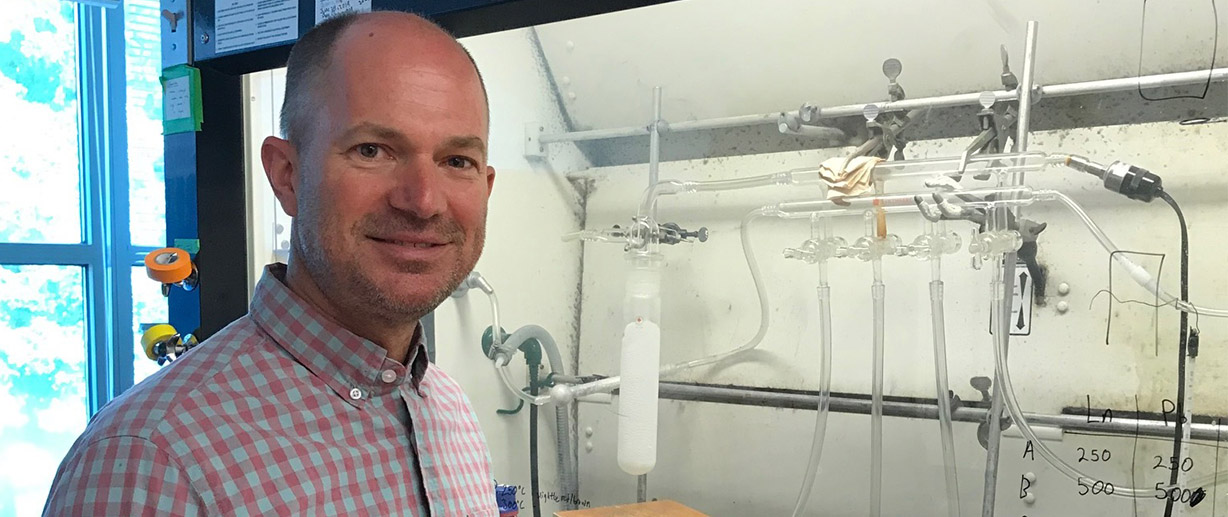Dr. Mackay Salley ’95 is spending the summer with world-class physical chemists and some of his favorite materials — solar cells, LEDs and novel magnetic substances.
Salley, professor and chair of the Wofford College Department of Physics, is a visiting scholar at the University of Washington in Seattle for the summer doing optical and electronic characterization studies, which are experiments that determine the properties of materials. Some of his colleagues are making materials that could be part of new solar cell materials, LEDs or new computing technology (spintronics).
“The lab I am visiting is world-renowned for their research in novel materials,” Salley says. “It’s exciting to be a part of this team.”
Salley has spent summers and a sabbatical in the university’s chemistry department in the past. One of his colleagues is Dr. Daniel Gamelin, who is a professor of chemistry and the director of the UW Molecular Engineering Materials Center (NSF MRSEC) at the University of Washington. They met while doing post-doctoral work in Switzerland in 2001 at the University of Bern, and they’ve kept in touch over the years.
Gamelin’s research group specializes in making thin films and nanoparticles. Salley participates in characterization studies to help determine the properties of the novel materials in the solar cell and LED realm. His specialty is optical spectroscopy, which is the study of how matter interacts with electromagnetic radiation or light.
“Using light to study materials is an elegant method that gives a wealth of information from macroscopic properties down to atomic level information,” Salley says. “Being able to apply those techniques to promising solar cell materials that could benefit society as a renewable energy source is super exciting to me.”
Salley is spending six weeks in Seattle working with a team of a dozen researchers from across the United States.
“The work here is primarily fundamental research to further our understanding of how these materials work,” Salley says. “We hope to uncover one more mystery Mother Nature has for us, and maybe it will lead to better solar cells in the future.”
